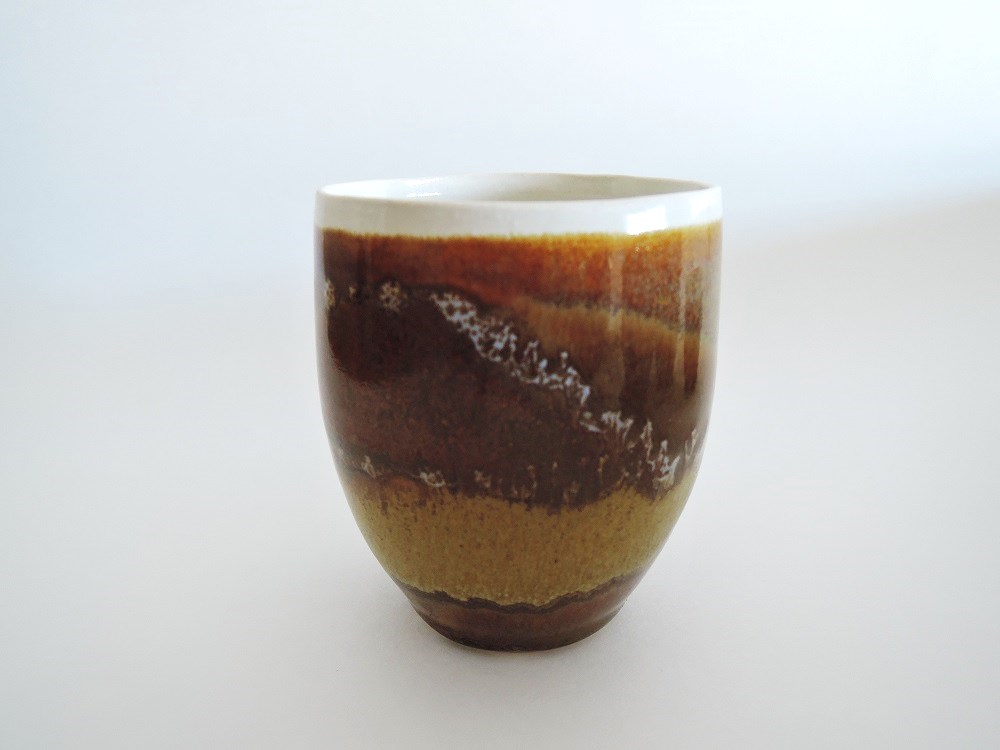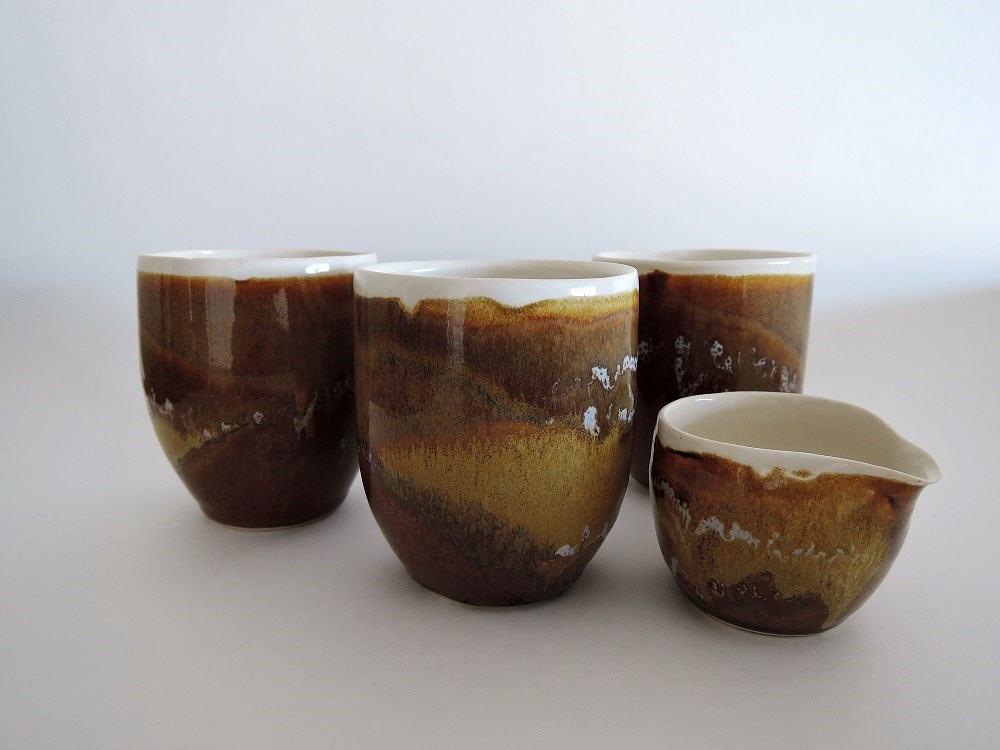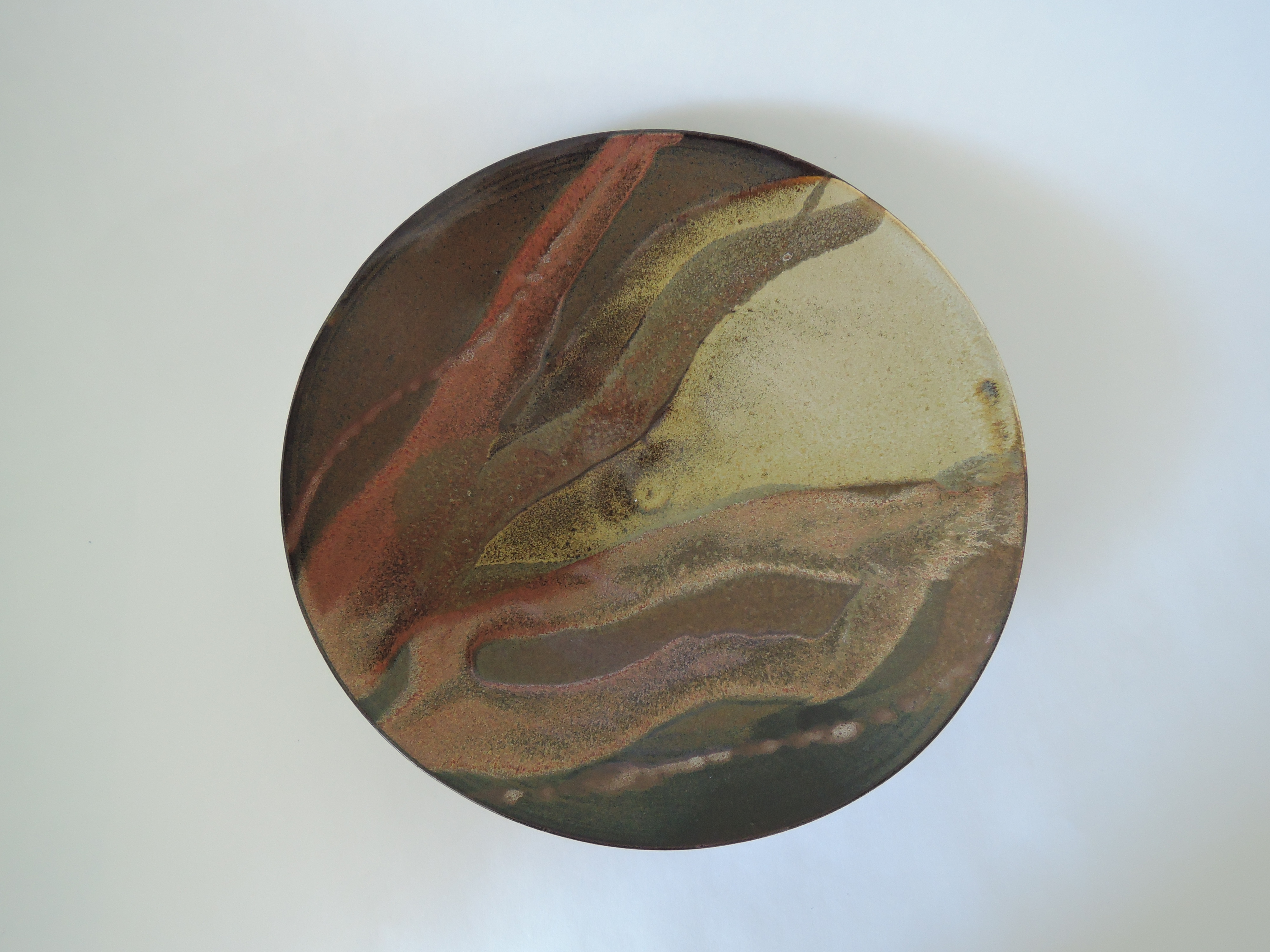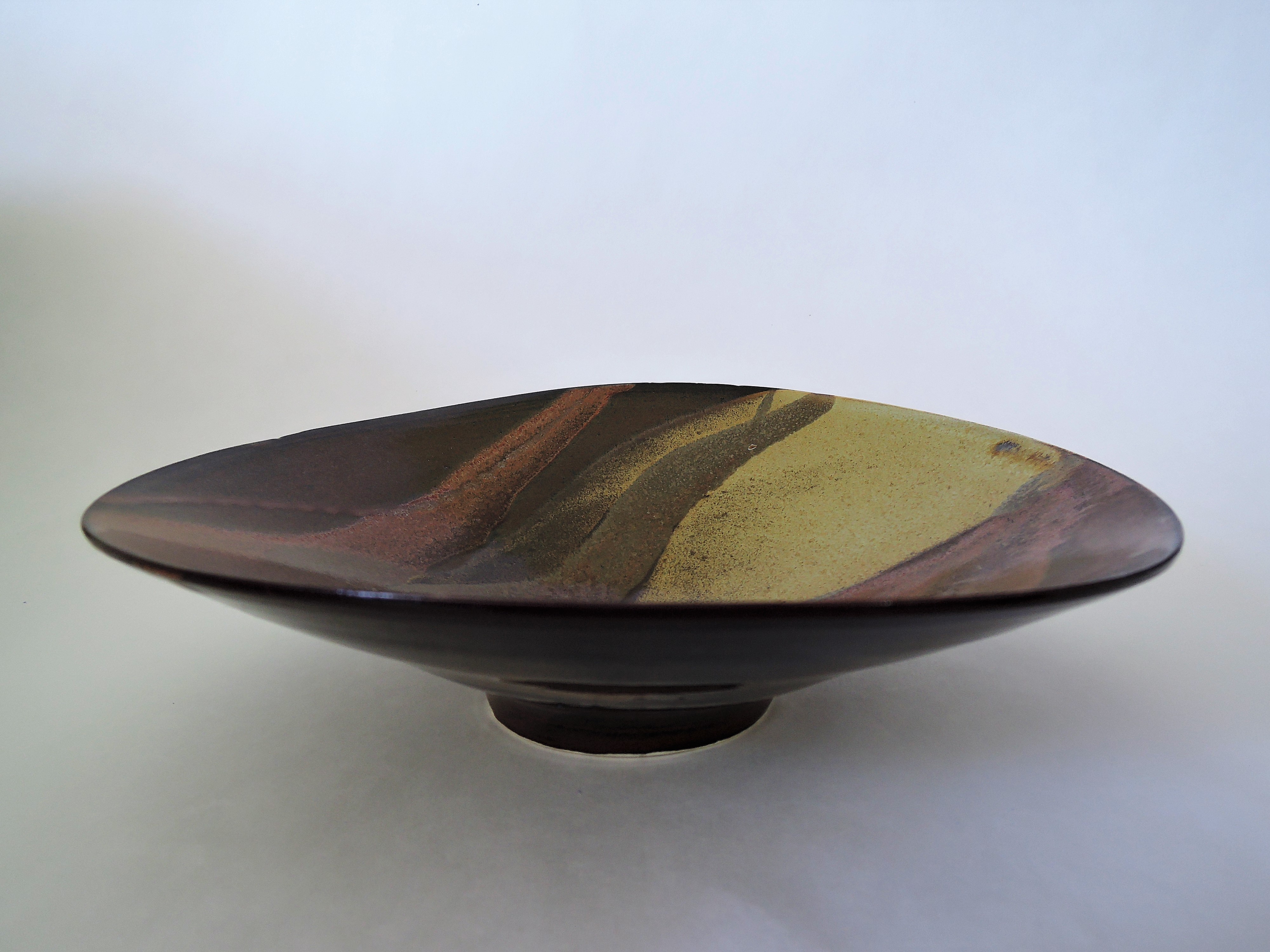I am still working my way to attractive, reliable glazes that work well in combination, here in my new environment at Gladstone Clayworks. I am not there yet, but I feel I am making progress. In contrast to the distorted bowl I made earlier this month, this time I dipped the pieces first in a transparent/white glaze before applying the dark, iron-rich glaze. This combination turns dusty brown (of the bowl) to a much lighter, caramel-like colour. On the one side, over that, a wide squirt of a white gives the caramel an even lighter, more golden tone; on the other side, the squirt of Bailey’s Orange Red gives some red, but far less than in the distorted bowl. The last, very thin squirts of my old faithful Blanc Beurré (from former Brussels days), kept it’s line nicely where it fell over two layers of glaze. However, not surprisingly, it ran badly where it fell over the broad squirts of the white and the Bailey’s; here the line broke, and left erratic blotches of white.
I misjudged how much all these glazes would run; but I got lucky. Though the glazes settled too heavily at the foot, I only lost one, out of a series of six. Live and learn…
Ht: 9 cm; di: 7.5 cm. Fired in oxidation, Cone 6; porcelaneous stoneware.



